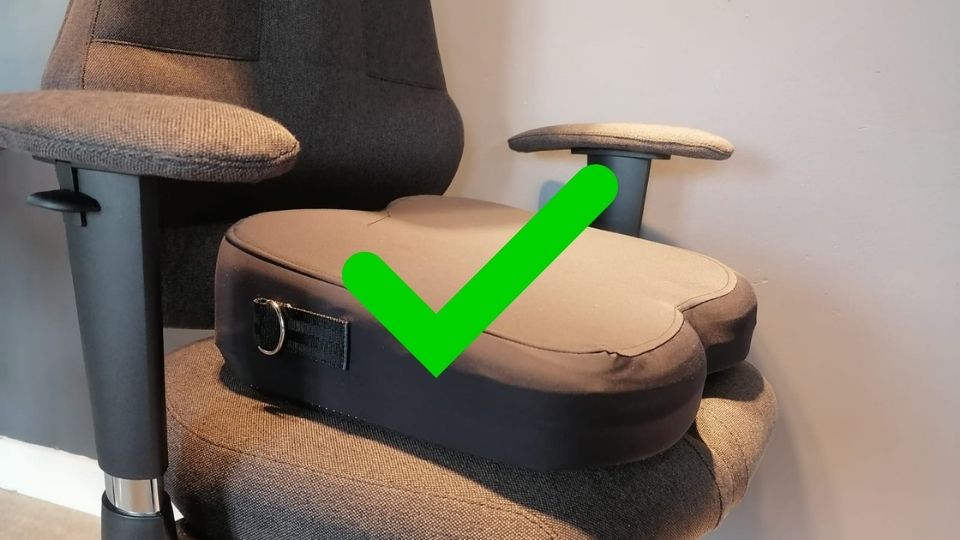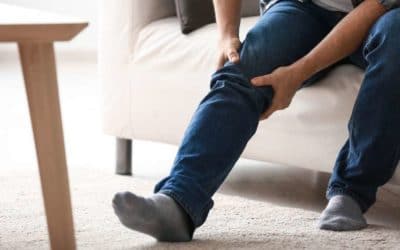Best Way to Sit on the Floor Without a Chair: Tips From a Chiropractor
Throughout our lives, we spend most of our time sitting on either a chair or a sofa. But, sitting on the floor is the ideal option in some events like playing with a dog, or child when there aren’t enough seats around. Needless to say, there are some correct and incorrect ways in which you’re able to achieve this. So, how do you sit on the floor without a chair?
As a general rule, when wanting to sit on the floor, there are six primary options to choose from: cross-legged, kneeling, bent sit, side sit, long sit, or even a squat. Some may be more comfortable than others depending on the individual’s flexibility and muscle strength.
As you can see, there are numerous ways that you can sit on the floor without a chair. If you want to understand more about these seating positions, I suggest you become knowledgeable on the below. Throughout this article, you will be provided with the benefit of my experience advising patients for more than 30 years on how to sit on a floor without a chair and how I designed simple solutions to do so.
Floor Sitting Positions: Best Ways to Sit on the Floor Without Pain
Sitting on the floor might seem strange to us in the west, but it’s a prevalent practice in many cultures. It comes with a lot of benefits, too, when done correctly. Without the support of a chair, your core is always engaged for stability, there’s less tension in your hips, you’ll have increased mobility and flexibility, and overall more muscle activity. It’s easy to forget how chairs prop us up most of our lives and, while that’s fine, we need to engage our muscles and joints simultaneously.
Cross-Legged

One trendy and very iconic floor position is simply sitting cross-legged. To do this properly, follow these steps:
- Sit on the floor and bend your knees, pointing them out. Put one foot under the opposite knee.
- Engage your core and shift your weight to your hips. Actively engage the buttocks and place your belly over your hips.
- Cushions or blankets under your knees or buttocks can decrease pressure.
Sitting cross-legged has been a preferred method by many cultures for a very long time, and it can have tremendous benefits for your posture. Some other variations may work better for you, such as having one foot upturned on the opposite calf. This can help straighten the back and further improve posture.
Best Seat Cushion for SittingDoctor's Recommendation
Black Friday Offer!
Get 35% off Orthopedic Seat Cushion
Product DetailsResearch-based Design
Recommended ForBack Discomfort
Video Guide
Video Guide
Kneeling

Kneeling on the floor is another very popular position, which can be very comfortable and beneficial if done correctly. You should be careful with kneeling as it can put massive pressure on the knees if done improperly. Follow these steps to kneel on the floor:
- Step one leg a pace or two behind and shift your weight to the front leg from a standing position.
- Gently lower your back knee to the ground, keeping your toes on the floor and your ankle flexed.
- Align your shoulders over your hips and your head over your heart. Lower the front knee to the floor.
- Align both knees under your shoulders on the floor, and rest your buttocks back on your heels.
Kneeling like this can be somewhat uncomfortable at first, and, as I said, it’s effortless to put too much pressure on here. Resting your ankles on the floor and finally your buttocks on top of the soles of your feet is the ideal posture for kneeling, but it’s not easy for everyone to get into.
Bent
If you’re experiencing knee and ankle discomfort, then there’s one primary seating position that you’ll want to try. This is the bent sit:
- While sitting on the floor, bend your knees, planting your feet on the floor.
- Align your feet just wider than your hips. The wider stance will stop your back from rounding.
- Keep your belly over your hips.
Side

The bent sit can also lead to a different variation, the side sit:
- Beginning in a bent sit, lower both your knees to the right on the floor.
- Place the bottom of your right foot against the front of your left thigh.
- Try to keep your hips grounded down to the floor; this will prevent your spine from curving.
- When your legs feel tired, switch to the other side.
The bent sit stretches and engages your inner thighs and helps maintain alignment.
Long
Your quads will always thank you for a stretch, and the long sit is a great way to do that:
- Extend your legs out in front of you with your buttocks on the floor. Point your toes upwards and actively engage them.
- Keep your belly over your hips, like in a bent sit.
- Sitting on the edge of a blanket (with your legs coming off) will help prevent your back from rounding.
The long sit is excellent for stretching the backs of the legs and the lower back. Keep your feet actively engaged for a better stretch.
Squat
Squatting is a very common variation that allows you to move quickly between seated and standing positions:
- Stand naturally, with your feet hip-width apart, planted firmly on the floor.
- Lower your buttocks, keeping your back straight until it’s just above the floor.
- Keep your shoulders and chest upright.
Squatting is one of the harder positions to maintain, and indeed it has become an exercise in and of itself. While it may be hard to keep up, it’s a fantastic way to engage your core and strengthen muscles and joints.
Whenever you sit on the floor, you will be putting more pressure on certain areas no matter how good your posture and shape is. Always be aware of any building pressure or discomfort, as sitting on the floor is highly beneficial in many ways, if done improperly, you could do harm, too. Make sure your back is straight and, however, you sit, don’t sit in one shape for too long; switch it up whenever you feel pain or discomfort.
Seat Cushion for Floor Sitting
Using an ergonomic seat wedge while sitting on the floor can be beneficial in terms of back posture and positioning. This cushion is designed to comfortably align your torso with your upper legs, while also providing a level of spinal support. The inward curve of the cushion helps draw the spine inwards, as well as helps to tilt the pelvis forward.
In addition to reducing stress on your spine, using this type of seating can also improve your stability and make it easier for you to maintain an upright position without putting excessive pressure on any individual joints or ligaments. Sitting in this way may help promote good posture habits, which could over time reduce muscular tension or fatigue related to incorrect alignment. The orthopedic seat wedge is specifically tailored for people who find sitting on a traditional chair uncomfortable or too hard, giving them a better alternative when it comes to long-term comfort and health benefits.
Review: Get my recommended seat cushion for floor seating to prevent back pain
- In order for a seat cushion to provide pressure relief and support, it usually has a layer that is supportive as well as pressure-relieving.
- Seating on wedge cushions improves your posture as they are ergonomically designed.
- If you are going to use a seat wedge, the slope should be between 8-13 degrees.
- Foam foundation (plus 96 kg/m3) of high quality
- At the top is a comfort layer (56-68 kg/m3)
- The ultimate foam type when it comes to comfort, resilience, and alignment is Natural Latex.
- The cover is stretchy and non-slip.
- Don’t use memory foam! Back issues make them a poor choice, so I wouldn’t recommend them. In contrast to natural latex, which is derived from tree sap, memory foam is not springy (resilient); it bottoms out; it traps heat, and it is made of toxic materials.
Takeaway
It’s important to know how to sit on the floor without a chair because we spend most of our time sitting. The wrong way is not good for your spine and can cause back pain or even muscle strain in other parts of the body like the knees. If you want some suggestions from a chiropractor who has studied this issue, keep reading my posts!






